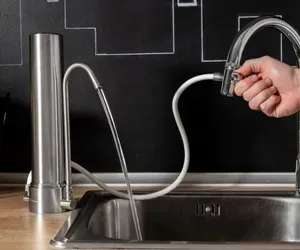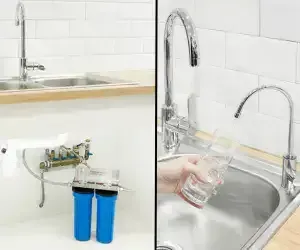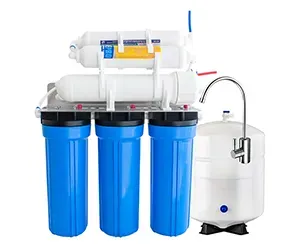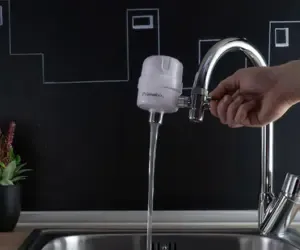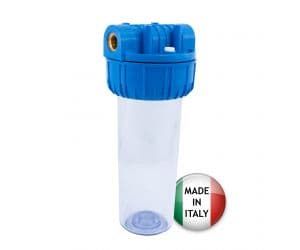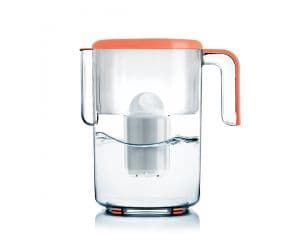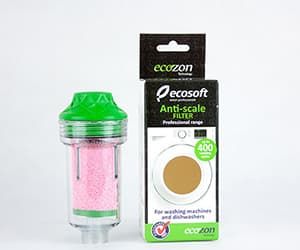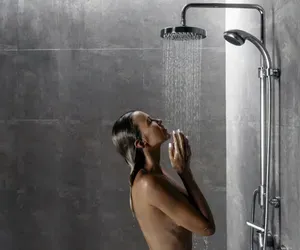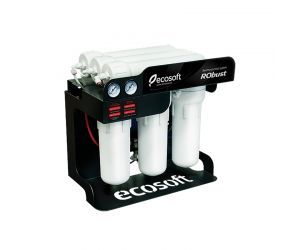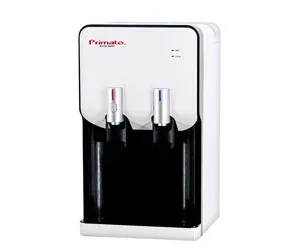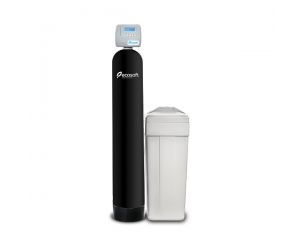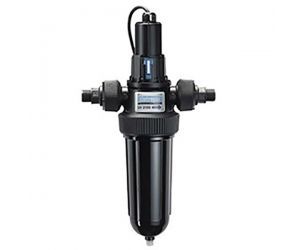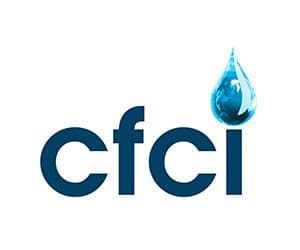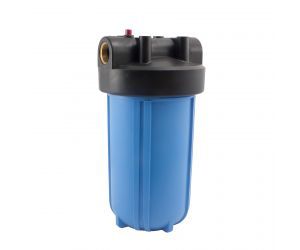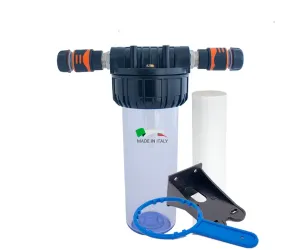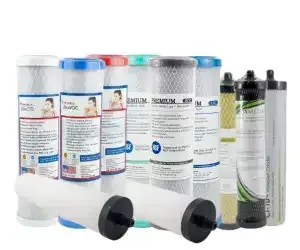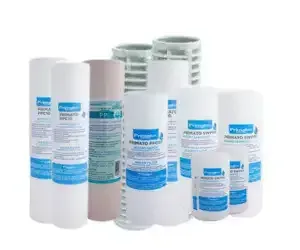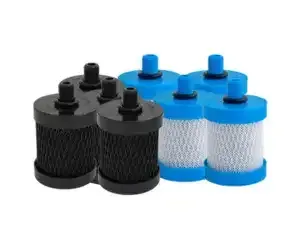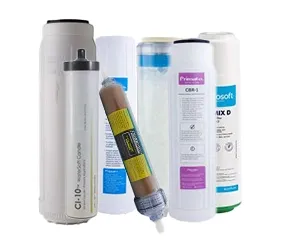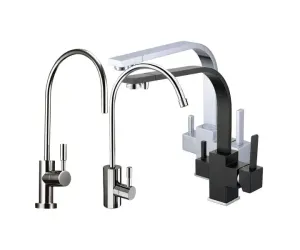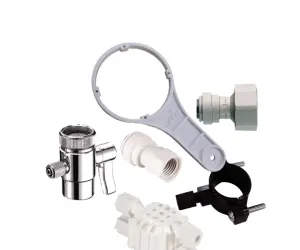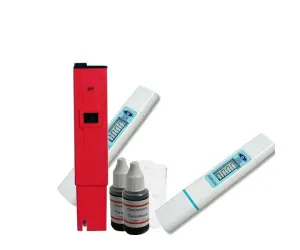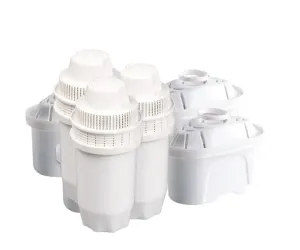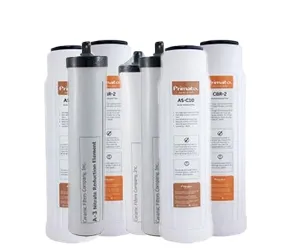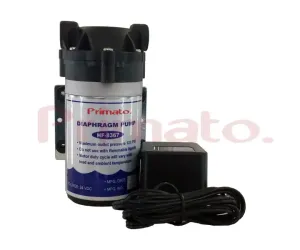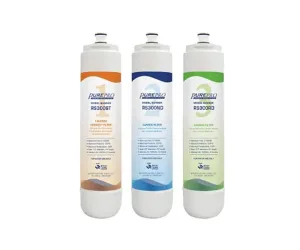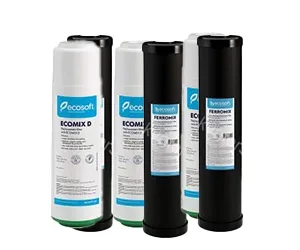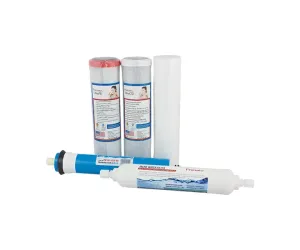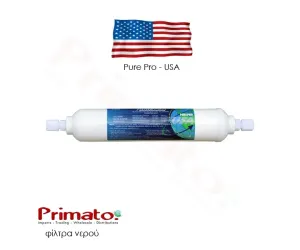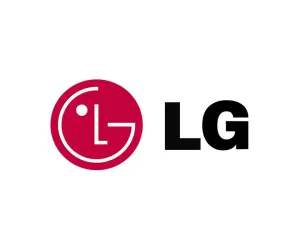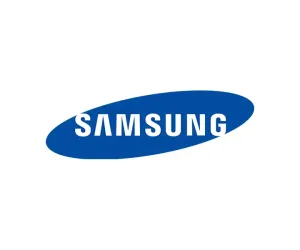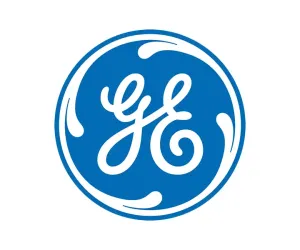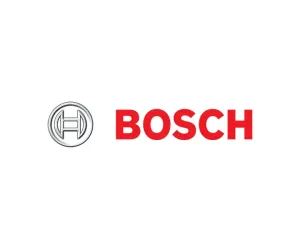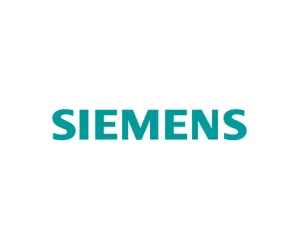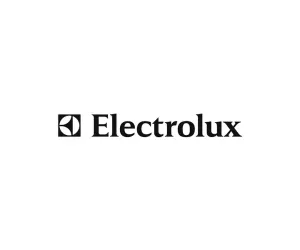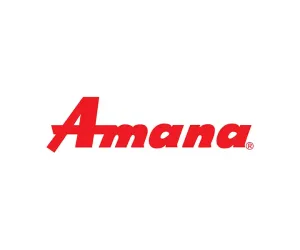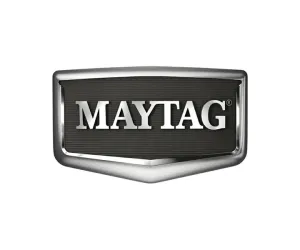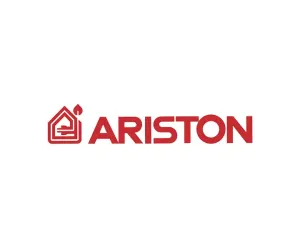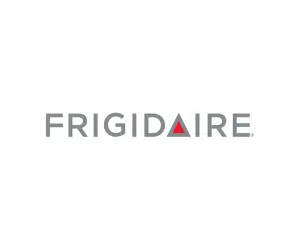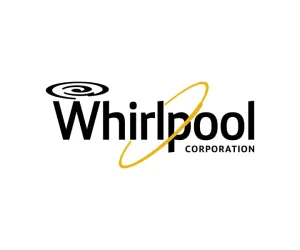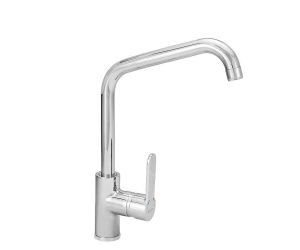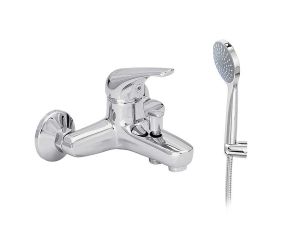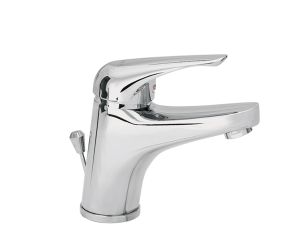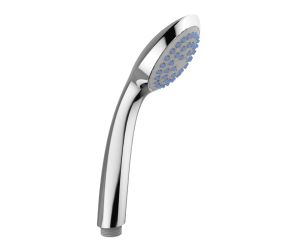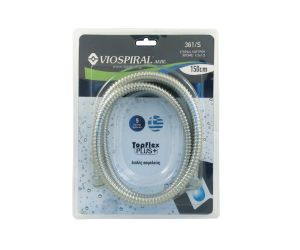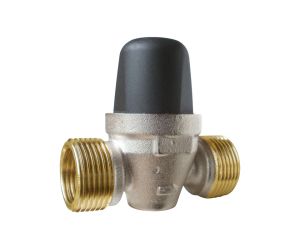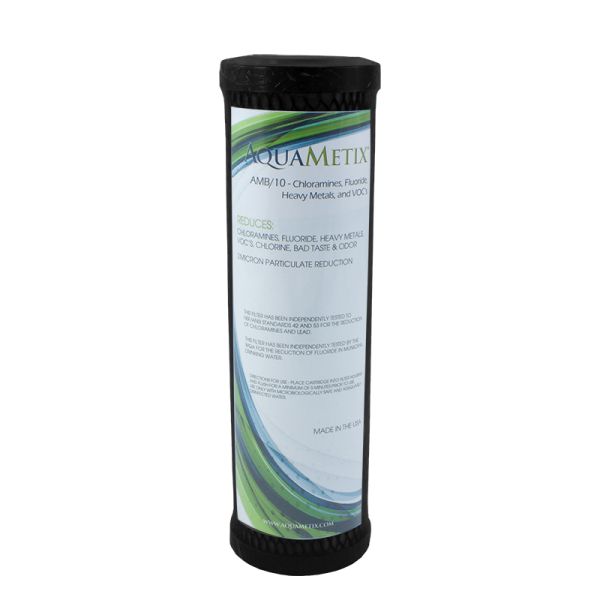American Compact Active Carbon Filter with Zeolite AquaMetix® CFAMB-975
- Shipping Cost
Shipping Zones and Costs
Zone A
Cost €4. Free on orders above €50
Countries: Greece
Zone B
Cost €5. Free on orders above €100
Countries: Bulgaria, Cyprus
Zone C
Cost €8. Free on orders above €100
Countries: Romania
Zone D
Cost €15. Free on orders above €100
Countries: Austria, Vatican, Belgium, France, Germany, Denmark, Estonia, United Kingdom, Ireland, Italy, Spain, Croatia, Latvia, Lithuania, Luxembourg, Malta, Monaco, Netherlands, Hungary, Poland, Portugal, Slovakia, Slovenia, Sweden, Czechia, Finland
Zone E
Cost €18. Free on orders above €100
Countries: Albania, Andorra, Bosnia and Herzegovina, North Macedonia, Gibraltar, Guernsey, Greenland, Switzerland, Iceland, Canary Islands, Kosovo, Liechtenstein, Montenegro, Faroe Islands, Norway, San Marino, Serbia, Jersey, Turkey
Zone F
Cost €21. Free on orders above €100
Countries: Egypt, Algeria, United Arab Emirates, USA, Jordan, Israel, Canada, Qatar, Kuwait, Lebanon, Libya, Morocco, Mexico, Bahrain, Oman, Ukraine, Saudi Arabia, Tunisia
Zone G
Cost €24. Free on orders above €100
Countries: Vietnam, Japan, India, Indonesia, Cambodia, China, South Korea, North Korea, Laos, Macau, Malaysia, Maldives, Bangladesh, Bhutan, Brunei, Myanmar, Nepal, Pakistan, Singapore, Sri Lanka, Taiwan, Thailand, Philippines, Hong Kong
Zone H
Cost €30. Free on orders above €100
Countries: Saint Barthelemy, Saint Vincent, Saint Helena, Saint Eustatius, Saint Kitts, Saint Lucia, Saint Martin, Azerbaijan, Ethiopia, Ivory Coast, American Samoa, East Timor, Angola, Anguilla, Antigua, Argentina, Armenia, Aruba, Australia, Afghanistan, Haiti, Vanuatu, Venezuela, Bermuda, Bolivia, Brazil, French Guiana, Georgia, Gambia, Gabon, Ghana, Guam, Guadeloupe, Guatemala, Guyana, Guinea, Equatorial Guinea, Guinea-Bissau, Grenada, Dominica, Dominican Republic, El Salvador, Eritrea, Zambia, Zimbabwe, Iran, Iraq, Kazakhstan, Cameroon, Central African Republic, Kenya, Cayman Islands, Kiribati, Colombia, Comoros, Congo, Zaire, Costa Rica, Cuba, Cook Islands, Curacao, Kyrgyzstan, Lesotho, Belarus, Liberia, Mayotte, Malawi, Mali, Mariana Islands, Marshall Islands, Martinique, Mauritius, Mauritania, Micronesia, Mongolia, Mozambique, Moldova, Montserrat, Barbados, Bahamas, Belize, Benin, Bonaire, Botswana, Burkina Faso, Burundi, Namibia, Nauru, New Zealand, New Caledonia, Nevis, Falkland Islands, Niger, Nicaragua, Niue Islands, South Sudan, South Africa, Honduras, Uganda, Uzbekistan, Uruguay, Palau, Panama, Papua New Guinea, Paraguay, British Virgin Islands, US Virgin Islands, Peru, Puerto Rico, Cape Verde, Reunion Islands, Rwanda, Russia, Samoa, Sao Tome and Principe, Senegal, Seychelles, Sierra Leone, Solomon Islands, Somalia, Northern Somalia, Eswatini, Sudan, Suriname, Syria, Tanzania, Tajikistan, Tahiti, Jamaica, Djibouti, Togo, Tonga, Tuvalu, Turkmenistan, Turks and Caicos, Chad, Trinidad and Tobago, Yemen, Fiji, Chile
In a nutshell...
Aquametix® is a patented combination of two types of activated carbon with Zeolite. Activated carbon and zeolites are combined with special polymers to create an extremely compact and porous water filter that fits most commercial devices. It is made in the USA and uses raw materials with the highest FDA specifications, state-of-the-art technologies and unprecedented performances. It is the only combined filter that reduces chlorine, fluorides, lead, heavy metals, volatile organic compounds (VOCs), drug and pharmaceutical compounds, nitrates, arsenic, chromium, chloramines, herbicides, Glyphosate, trihalomethanes, MTBE, aluminum, iron, mercury, nickel, zinc, industrial residues, turbidity and a very large number of hazardous elements with a single cartridge.
What is activated carbon
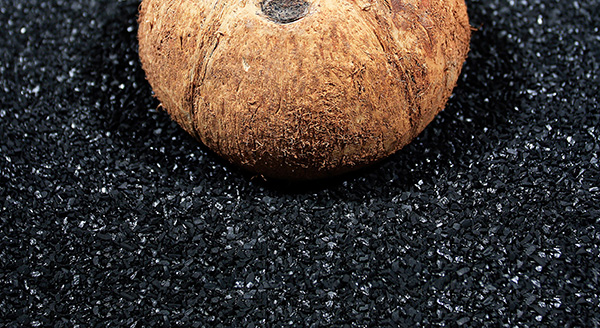
The activated carbon that Aquametix® has is a completely natural product that looks like a fine, odorless, tasteless and non-toxic black powder. It can be produced from peat, bamboo, charcoal, wood, sawdust, coconut husk, olive kernels, but also from oil. It is heated in a controlled environment and in vacuum to acquire its characteristic porous surface. These tiny holes, or pores, can increase the surface of carbon from 500 to 1500 m2 / gr. Due to this treatment, it can and does bind various substances that come in contact with it, in liquid or gaseous form, and in quantities many times its own weight. One cubic centimeter of activated carbon has the same area as a surface of 50,000 square meters. Of course, the activated carbon produced from coconut husk is the most ecological and environmentally friendly! Aquametix® combines two types of activated carbon with Zeolite.
What are activated carbon filters and how they are made:
What is Zeolite
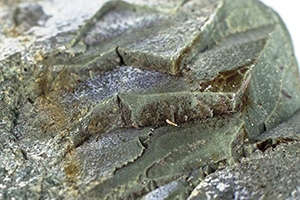
Zeolite is a mineral of volcanic origin that, due to its special chemical properties, is used in water treatment industry, environmental protection, crops, agriculture, etc. It was named so in 1756 by the Swedish miner Axel Kronstadt, who observed that rapid stilbite heating produced a large amount of steam from the water absorbed by the material. Therefore, he named this material zeolite, from the greek words zeo (boil) and lithos (lite=stone).
It contains a significant amount of clinoptilolite and it is also used in nuclear treatment, as it can purify nuclear waste containing radioactive isotopes. One of its most important functions is the ability to bind and eliminate heavy metals, such as lead, mercury, cadmium, aluminum and extra iron, without removing healthy ions and metals.
AquaMetix® Potential
- Chlorine reduction 99,9%. ENVIROTEK Certification based on ANSI/NSF Standard 42. EPA ID #NJ01298 NJ DEP ID #03048 NY ELAP ID #12044.
- Nitrate reduction. ENVIROTEK Certification based on ANSI/NSF Standard 53 and ANSI/NSF Standard 42. EPA ID #NJ01298 NJ DEP ID #03048 NY ELAP ID #12044.
CONCENTRATION IN WATER CONCENTRATION AFTER THE FILTER REDUCTION 27.3 mg/L 4.9 mg/L 82.1% - Lead reduction according to ENVIROTEK Certification based on ANSI/NSF Standard 53. EPA ID #NJ01298 NJ DEP ID #03048 NY ELAP ID #12044.
CONCENTRATION IN WATER CONCENTRATION AFTER THE FILTER REDUCTION 152 μg/L <2 μg/L 99.9% - Average lead reduction 98,2% after 11356 L according to the certification by Water Quality Association based on ANSI/NSF Standard 53. Certification Number WQA REP.7601.1501L.102815.01
- Arsenic reduction according to ENVIROTEK Certification based on ANSI/NSF Standard 53 and ANSI/NSF Standard 42. EPA ID #NJ01298 NJ DEP ID #03048 NY ELAP ID #12044.
CONCENTRATION IN WATER CONCENTRATION AFTER THE FILTER REDUCTION 300 μg/L <2 μg/L 99.9% - Chromium reduction according to ENVIROTEK Certfication based on ANSI/NSF Standard 53 and ANSI/NSF Standard 42. EPA ID #NJ01298 NJ DEP ID #03048 NY ELAP ID #12044.
CONCENTRATION IN WATER CONCENTRATION AFTER THE FILTER REDUCTION 304 μg/L <2 μg/L 99.9% - Heavy metal reduction according to ENVIROTEK Certification based on ANSI/NSF Standard 53. EPA ID #NJ01298 NJ DEP ID #03048 NY ELAP ID #12044.
ELEMENT CONCENTRATION IN WATER CONCENTRATION AFTER THE FILTER REDUCTION Aluminum 204 μg/L <2 μg/L 99% Antimony 6.1 μg/L <0.5 μg/L 99.9% Arsenic 300 μg/L <2 μg/L 99,9% Beryllium 50.2 μg/L <0.5 μg/L 99,9% Bismuth 50.1 μg/L <2 μg/L 99,9% Cadmium 31.5 μg/L 7.1 μg/L 78.1% Chromium 304 μg/L <2 μg/L 99,9% Copper 3012 μg/L <2 μg/L 99,9% Iron 3310 μg/L <2 μg/L 99,9% Lead 152 μg/L <2 μg/L 99,9% Manganese 1050 μg/L <2 μg/L 99,9% Mercury 6.2 μg/L <0.5 μg/L 99,9% Nickel 102 μg/L <2 μg/L 99,9% Selenium 103 μg/L <2 μg/L 99,9% Zinc 10000 μg/L <2 μg/L 99,9% - Fluorides: 92% of all types - fluoropyritic acid, hydrofluoropyritic, fluoropyritic sodium, sodium fluoride (ENVIROTEK Certification)
- Reduction of Volatile Organic Compounds 99,9% according to ENVIROTEK Certification with water check based on NSF Standard 53. EPA ID #NJ01298 NJ DEP ID #03048 NY ELAP ID #12044. VOCs contain chemicals that come from both humans and nature. We usually find them in wells or pipes. Some VOCs are pesticides, herbicides and insecticides that enter groundwater after application. Other volatile organic compounds enter groundwater through industrial use or sewers.
Some of the VOCs reduced are the following: Dichlorodifluoromethane, Chloromethane, Vinylchloride, Bromomethane, Chloroethane, Trichlorofluoromethane, 1,1-Dichloroethene, Methylene Chloride, trans-|,2-Dichloroehene, MTBE, 1,1-Dichlorethane, cis-1,2-Dichloroethene, 2,2-Dichloropropane, Bromochloromethane, Chloroform, Carbon ‘Tetrachloride, 1,1,1-Trichloroethane, 1,1-Dichloropropene, Benzene, 1,2-Dichloroethane, Trichloroethene, Dibromomethane, 1,2-Dichloropropane, Bromodichloromethane, cis-1,3-Dichloropropene, Toluene, trans-1,3-Dichloropropene, Tetrachloroethene, 1,1,2-Trichloroethane, Chlorodibromomethane, 1,3-Dichloropropane, Ethylbenzene, Chlorobenzene, 1,1,1,2-Tetrachloroethane, m-Xylene, o-Xylene, Styrene, Bromoform, lsopropylbenzene, n-Propylbenzene, Bromobenzene, 1,1,2,2-Tetrachloroethane, 1,3,5-Trimethylbenzene, 2-Chlorotoluene, 1,2,3-Trichloropropane, Dichlorodifluoromethane, Chloromethane, Vinylchloride, Bromomethane, Chloroethane, Trichlorofluoromethane, 1,1-Dichloroethene, Methylene Chloride, trans-1,2-Dichloroehene, 4-Chlorotoluene, tert-Butylbenzene, 1,2,4-Trimethylbenzene, sec-Butylbenzene, 4-Isopropyltoluene, 1,3-Dichlorobenzene, 1,4-Dichlorobenzene, n-Butylbenzene, 1,2-Dichlorobenzene, Hexachlorobutadiene, 1,2,4-Trichlorobenzene, Naphthalene, 1,2,3-Trichlorobenzene - Reduction of bisphenol A (BPA) 99.9% according to ENVIROTEK Certification EPA ID #NJ02298 NJ DEP ID #03048 - REPORT #15-293. The minimum requirements for bisphenol A reduction based on NSF standard 401 are 85%. Analytically:
LITERS OF WATER - BPA CONCENTRATION CONCENTRATION AFTER THE FILTER REDUCTION 568L - 2μg/L <0.2 μg/L 99.9% 1135L - 2 μg/L <0.2 μg/L 99.9% 1703L - 2.1 μg/L <0.2 μg/L 99.9% 2271L - 2 μg/L <0.2 μg/L 99.9% 3406L - 2 μg/L <0.2 μg/L 99.9% 3406L - 2 μg/L <0.2 μg/L 99.9% 4542L - 2.1 μg/L 0.2 μg/L 90.5% - Pesticides Reduction 99,9% according to ENVIROTEK Certification with water check based on NSF Standard 53. EPA ID #NJ01298 NJ DEP ID #03048 NY ELAP ID #12044. In detail, the pesticides tested are the following: 4,4°-DDD, 4,4’-DDE, 44’-DDT, Alachlor, Aldrin, Alpha-BHC, Ametryn, Atraton, Atrazine, Beta-BHC, Bromacil, Carboturan, Chlordane, Chlorneb, Chlorobenzilate, Chlorothalonil, Chlorprophane, Chlorpyrifos, Cyanizene 1, Delta-BHC, Dichlorvos, Dieldrin, Diphenamid, Disulfoton, Endosulfan Sulfate, Endrin, Endrin Aldehide, Endrin etone, Endusulfan I, Endusulfan II, Ethoprop, Fenamiphos, Fenarimol, Fluoridone, Gamma-BHC (Lindane) 2.2 0.8 63.6, Heptachlor, Heptachlor Epoxide, Methoxychlor, Molinate, PCB’s, Prometron, Simazine, Toxaphene.
Here are the most basic ones: ELEMENT CONCENTRATION IN WATER CONCENTRATION AFTER THE FILTER REDUCTION Atrazine 9.1 μg/L <0.5 μg/L 99.9% 4,4°-DDD 50.2 μg/L <0.5 μg/L 99.9% 4,4’-DDE 50.1 μg/L <0.5 μg/L 99.9% 44’-DDT 50.2 μg/L <0.5 μg/L 99.9% - Herbicides reduction from 99% to 99,9% according to ENVIROTEK Certification with with water check based on NSF Standard 53. EPA ID #NJ01298 NJ DEP ID #03048 NY ELAP ID #12044. In detail, the herbicides tested are as follows: Dalapon, Dicamba, Dinosep, Dichlorporp, 2,4-D, Pentachlorophenol, Picoram, 2,4,5-T, 2,4,5-TP, Silvex), 2,4-DB, Bentazom, DCPA, Quinclorac, Aciflurfen.
- Drugs and pharmaceutical compounds 99.5% according to ENVIROTEK Certification with water check based on NSF Standard 401. EPA ID #NJ01298 NJ DEP ID #03048 NY ELAP ID #12044. In detail, the pharmaceuticals checked are as the following: Acetaminofen, Caffeine, Carbamazepine, Ciprofloxacin HC], Erythromycin USP, Sul famethoxazole, Trimethoprim, Bisphenol A, Diclofenac Sodium, 4-para-Nonylphenol, 4-lert-Octylphenol, Primidone, Progestrone, Gemfibrozil, Ibuprofen, Naproxen Sodium, Triclosan.
- Reduction of Semi-volatile organic compounds 99.9% according to ENVIROTEK Certification with water check based on NSF Standard 53. EPA ID #NJ01298 NJ DEP ID #03048 NY ELAP ID #12044. Semi-volatile organic compounds (SVOCs) are a subgroup of VOCs (Volatile Organic Compounds) that tend to have a higher molecular weight and a higher boiling point temperature. SVOCs are a cause for concern due to their abundance in the indoor environment and their potential for adverse health effects for humans. In detail, the semi-volatile organic compounds tested are the following: Acenaphthylene, Anthracene, Benz[a]anthracene, Benzo[b]fluoranthene, Benzo[k]fluoranthene, Benzo[a|pyrene, Benzo[g.h,i]perylene, Butylbenzylphthalate, Carboxin, 2-Chlorobiphenyl, Chrysene, Cycloate, Dacthal (DCPA), Diazinon, Dibenz{a,hjanthracene, Di-n-Butylphthalate, 2,3-Dichlorobiphenyl, Diethylphthalate, Di(2-ethylhexyl)adipate, Di(2-ethylhexyl)phthalate, Dimethylphthalate, EPTC, lluorene, 2,2',3,3', 4,4’, 6-Heptachlorobiphenyl, Hexachlorobenzene, 2,2', 4,4', 5,6'-Hexachlorobipheny], Hexachlorocyclohexane, alpha, Hexachlorocyclohexane, beta, Hexachlorocyclohexane, delta, Hexachlorocyclopentadiene, Hexazinone, Indeno[1,2,3,c,d]pyrene, Isophorone, Merphos, Methyl Paraoxon, Norflurazon, 2,2', 3,3', 4,5', 6,6'-Octachlorobiphenyl, Pebulate, 2,2', 3', 4,6'-Pentachlorobiphenyl, Pentachlorophenol, Phenanthrene, cis-Permethrin, trans-Permethrin, Prometon, Prometryn, Pronamide, Propachlor, Propazine, Triademefon, 2,4,5-Trichlorobiphenyl Tricyclazole, Trifluralin, Vernolate.
- Microplastics 99%
- Chloramines: 99.9% ENVIROTEK Certification EPA ID #NJ01298 NJ DEP ID #03048 NY ELAP ID #12044 based on ANSI/NSF Standard 42. Some municipalities, instead of using chlorine to disinfect water, use chloramine (a combination of chlorine and ammonia). The reason is that chloramines remain active in water more than chlorine. That is, if drinking water has a long way to go before it reaches your tap, then chloramine is better than chlorine. It also reduces the combination of chloramine, monochloramine and ammonia.
- > 98% THMs (Trihalomethanes). Trihalomethanes (ΤΗΜs) in water are by-products of chlorine disinfection. The most common compounds controlled by water services are chloroform, bromophorm, dibromochloromethane, and bromodichloromethane.
- MTBE Methyl tert-butyl ether reduction by 97.6%. ENVIROTEK Certification. Methyl triobutyl (MTBE) is a volatile organic compound added to gasoline to reduce carbon monoxide and ozone levels in car emissions. In California, the addition of MTBE improved air quality by reducing car emissions by 14% at the state level. Unfortunately, in recent years, methyl triobutyl has begun to appear in water as well.
- It effectively reduces industrial residues, toxicity, turbidity, particulate matter, mud, rust, soil and various other substances harmful to the body.
- Reduction of radionuclides
- It does not remove the minerals and trace elements that are necessary for the body.
- It significantly improves the taste and smell of water.
- It must be replaced at least once a year or every 2300 liters.
Durability:
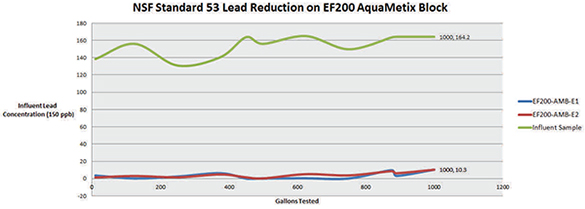
Lead: 2400 gallons, 9085 liters

Fluorides: 500 gallons, 1893 liters

